Weather Modification
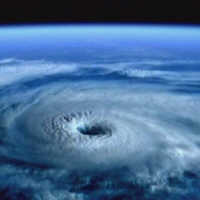
Global warming is forecast to have a catastrophic effect on the weather all over the planet and this will place extreme pressure on the world’s natural resources. To try and combat these effects, experts are increasingly turning to weather modification techniques such as cloud seeding. In the future, weather modification could even be used to tackle the growing threat of superstorms. The Science of Superstorms could be a potential Frankenstein or our saviour.
Playing God with the Weather
While there are clear humanitarian reasons for wanting to manipulate the weather, there is also a dark history around previous attempts to do so. The British, Russian and American governments have all conducted top-secret weather modification projects, sometimes with disastrous consequences. For the first time, some of those actively involved have agreed to talk.
Here, we investigate the potential benefits and the appalling consequences of attempting to control the weather.
Dr Roelof Bruintjes of the National Centre for Atmospheric Research is one of the world’s leading authorities on weather modification. He’s been conduction research in this area for more than twenty years. Dr Bruintjes’ expertise is in demand all over the world, for one very good reason; he can make it rain!
Cloud Seeding
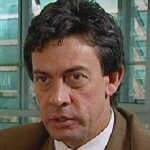
A rapidly growing population coupled with global warming means that water is set to become the world’s most precious commodity. One of the solutions to this problem can be found in clouds. Dr Deon Terblanche of the UN Meteorological Organisation explains “An average rain cloud contains about eight million tons of rainwater. Therefore, there’s a vast quantity of untapped fresh water in the sky and this is where cloud-seeding comes in, to address the growing needs for water around the world”.
Most rain-making techniques used today originated back in 1946 when scientists discovered that by dropping particles of a chemical called silver iodide into cloud tops, they could trigger rainfall. Since then, countries all over the world have experimented with different ways to squeeze rain out of the clouds. China spends more on cloud-seeding than any other country.
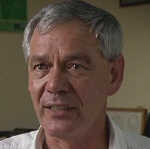
Dr Bruintjes is in Mali, West Africa to test a new technique he’s devised with colleagues from the National Centre for Atmospheric Research. It involves the use of pyrotechnic flares to deliver a special seeding material into the base of clouds. The so-called hydroscopic flare contain salts. As the flares burn, the smoke diffuses the particles and takes them into the cloud where they participate in the rain formation. Once released into the cloud’s updraught, each one of the hydroscopic salt particles becomes a seed around which a single water droplet can form. These droplets collide with each other and grow, eventually becoming heavy enough to fall out of the cloud as rain.
Weather modification, today, is an increasingly precise science which can reap huge benefits for the many countries that suffer from severe water shortages. Cloud-seeding seems to be making a change for the better for many people in the world today but, it’s a science that is born out of a murky and troubled past.
In 1952, a freak storm destroyed the sleep Devonshire village of Lynemouth. The storm led to catastrophic flooding that destroyed the town and killed 35 people. It was the most destructive storm in British history, but was it a natural one?
Within days of the catastrophe, there were rumours of secret experiments which the Met. office and Ministry of Defence flatly denied.
Then a witness came forward. A glider pilot Alan Yates, now deceased, told a BBC journalist that, just prior to the Lynemouth flood, he had taken part in a government-sponsored cloud-seeding experiment. Yates told the journalist that he and his colleagues had seeded clouds over the Bedfordshire countryside and had witnessed the effects for themselves.
Operation Cumulus
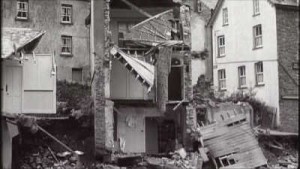
Recently declassified documents have confirmed that the experiment, codenamed Operation Cumulus, took place in the first two weeks of August 1952 and coincided with the heaviest rainfall in Bedfordshire for many years. The experiment was heralded as a resounding success, until the rain continued to spread west into Devon.
More than 50 years after the event, it is impossible to say if cloud-seeding really did trigger the most destructive storm in British history, or if it was just an unfortunate coincidence. What is clear, is that is that the government, anxious not to be blamed, closed the project down and denied Operation Cumulus had ever taken place.
Operation Stormfury
A decade after the Lynemouth disaster, research on cloud-seeding was to continue, this time in the United States with Project Stormfury. They were hoping to use the technology to weaken hurricanes. What the Stormfury scientists didn’t realise, was that their research had caught the eye of the military. Dr Joanne Simpson was one of the pioneers of Project Stormfury. She was to find out, only much later, that the military were developing her techniques and using them as a weapon of war.
At that time, the United States army were in Vietnam struggling against the Viet Cong, an elusive guerrilla army. The Pentagon were desperate to explore anything that might give them an edge. So, when military planners suggested that cloud-seeding might trigger massive downpours and flood the Viet Cong’s main supply routes, the government were quick to respond.
Project Popeye
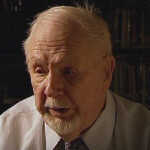
Dr Pierre Saint Amand was part of a team assembled in a top-secret operation known simply as Project Popeye. The Ho Chi Minh trail was of key strategic importance to the Viet Cong, the route along which vital weapons and supplies were transported. In May 1967, as monsoon clouds developed over the Ho Chi Minh trail, Armand and his team put their new weapon to the test. The results were spectacular.
Having witnessed the success of this experiment, the military now began to dream of more radical and extreme uses to which the technology could be applied. Military planners imagined loading the clouds with radiological, biological and chemical agents and having them rain on demand. The belief was that you could attack your enemy using the weather, but deny ever doing so.
Experiments in Vietnam continued for five years until a leak from The White House blew the cover on Project Popeye. Allegations were made that cloud-seeding had not only made jungle paths impassable, it had also killed thousands of innocent people. Project Popeye had opened the door to a new and dangerous type of warfare. The firestorm it created led to an international treaty banning all use of weather modification for military purposes. But, this didn’t stop governments from continuing to explore ways of modifying the weather, sometimes for highly questionable purposes.
For decades, the Soviet Union seeded clouds before they reached Moscow in order to prevent rainfall on their big military parades. Harmless enough you may think but, evidence has recently come to light that the Soviet authorities also used this technology for something much more sinister.
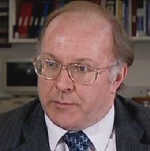
On the 26th April 1986, the Chernobyl nuclear power plant in Ukraine, exploded spewing hundreds of tons of radioactive material into the atmosphere and creating the most horrific nuclear disaster in history.
In 1992, Dr Alan Flowers was one of the first western scientists allowed into the area to examine the extent of the radioactive fallout. He was working in Gomel, Belarus, an area between Chernobyl and Moscow. Many children in Belarus were showing the effects of intense radioactive poisoning. But, how was this possible so far from the reactor? Following the explosion, there was a build up of heavily radioactive rain clouds above Chernobyl. The prevailing winds threatened to blow these clouds towards Russia and the major cities of Moscow and St Petersburg, but the rain never reached these cities. Instead, bouts of very heavy rain fell on the south-eastern corner of Belarus. Disturbingly, many eye-witnesses claim that the rainfall was caused by cloud-seeding.
The Moscow authorities denied that cloud-seeding had taken place after the accident. However, last year, at the 20th anniversary of the Chernobyl disaster, among those honoured for their bravery was a pilot names Major Alexsei Grushin. The award he received was for cloud-seeding operations during the Chernobyl clean-up.
External Links
Cloud Seeding - Wikipedia Page
Further Reading
[amazon asin=1850433313&template=add to cart] The Truth About Chernobyl = Andrei Sakharov
[amazon asin=1410213528&template=add to cart] Weather Modification: Programs, Problems, Policy and Potential
[amazon asin=078440819X&template=add to cart] Guidelines for Cloud Seeding - Conrad G. Keyes
